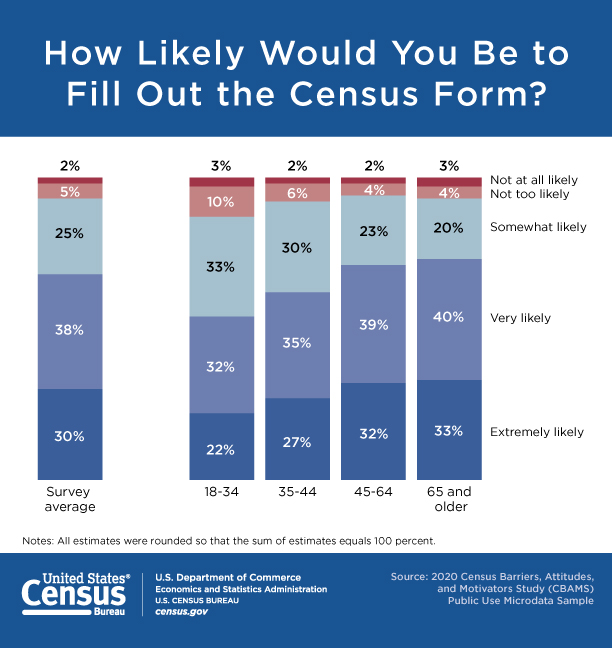Minot to launch census campaign

JILL SCHRAMM/MDN Minot has several new neighborhoods, including this one in northwest Minot, that will add to the city’s census count in 2020.
The City of Minot will be launching a campaign in January to encourage residents to be counted when the national census officially rolls out in March.
Brian Billingsley, the City of Minot’s community and economic development director, said the city’s Complete Count Committee plans to begin moving in January on its awareness strategies to remind residents to return their census surveys during the participation period from March 12 to April 30.
People could see advertisements on city buses and sanitation trucks in February. Radio and print advertising, door hangers and grocery bag inserts will appear in March and April. Local libraries will be giving away reminder bookmarks. There also will be banners, posters, flyers and miscellaneous swag as well as advertising on social media through Facebook, Instagram and Snapchat.
The committee is working with a $36,300 budget, up from about $10,000 available during the last census in 2010. The amount includes $25,000 from the City of Minot and grants from the North Dakota Department of Commerce that include $1,800 to print 7,500 door hangers for apartment units, $4,500 to print 80,000 grocery bag inserts at Marketplace Foods and $5,000 for advertising on city buses and sanitation vehicles for four months. An event is being planned for Census Day on April 1. The campaign is to continue through July, when census workers expect to complete their survey follow-ups.
In the 2010 census, Minot residents had an initial response rate to the census of 78%, slightly above the statewide average of 75% and national average of 74%.

Source: U.S. Census Bureau
“I think we should be able to get a higher participation rate because of the expanded options that are available,” Billingsley said. “There’s multiple ways to participate. You can actually bring the census to the public. You can do it right on a tablet, on a smart phone.”
For the first time, the census can be completed by mail, online or phone. Residents who do not participate by responding to a mailing will be visited by an enumerator between May and July.
To encourage people to complete the census surveys, Minot’s committee plans to have three mobile kiosks with computers that will travel to key areas to enable residents to participate electronically. Billingsley said the kiosks will show up at sporting activities and other public events as well as at groceries, churches, soup kitchens, food pantries and other locations that can target often missed populations that include military members, college students, low-income residents, construction and oil workers and Native Americans.
“We are going to try to capture all those groups. Minot has a fairly high transient population, between the university, the Air Force base, oil field workers. There’s a a lot of people moving in and out of here so we have our work cut out for us,” Billingsley said.
One kiosk is expected to have a permanent location in Minot Public Library.

Source: City of Minot A map shows the response rate to the 2010 census survey across the city of Minot.
According to the U.S. Census Bureau, the census form should be simple and quick to complete. It will ask:
– How many people are living or staying at your home on April 1, 2020?
– Is the home owned or rented?
– What is the gender, age and race of each person in the home?
– Is a person in the home of Hispanic, Latino or Spanish origin?
– What is the relationship of each person in your home?
Answers are important because the data is used by businesses, researchers and communities to make decisions, such as whether a new fire department or roads are needed or to determine funding for school lunches.
Billingsley aid the census is important not just to the City of Minot but to other organizations and businesses. Many businesses, in seeking new locations for expansion, will only look at cities of 50,000 or more in population, he said.
“Every public or private organization will use census data at one time or another to influence a decision,” he said.
Willy Soderholm, executive director for Community Action Partnership in Minot, said his agency’s funding is based on population and poverty levels, which makes an accurate count critical.
“It has a direct impact on our federal dollars that we receive. It’s very important that the low-income people that we serve are counted,” he said.
Community Action hopes to be one of the locations where the public can access a computer to sign up to be counted. The agency also will be pushing hard to make sure everyone who receives services or comes in its door is informed about the census.
Minot Mayor Shaun Sipma has promoted an accurate count because of the belief that the city may be at that 50,000 population mark, which would entitle Minot to certain federal funds. Business attraction is another benefit of reaching the population milestone, he said at a recent council meeting.
“It essentially puts us into a category that has a much greater potential for economic development,” he said.
North Dakota receives an estimated $1.4 billion, or $1,910 per person, in federal funds annually based on census data, according to research from The George Washington University in Washington, D.C. The money includes dollars going to medical programs, highways, housing, energy assistance, special education, foster care and nutrition assistance.
- JILL SCHRAMM/MDN Minot has several new neighborhoods, including this one in northwest Minot, that will add to the city’s census count in 2020.
- Source: U.S. Census Bureau
- Source: City of Minot A map shows the response rate to the 2010 census survey across the city of Minot.






